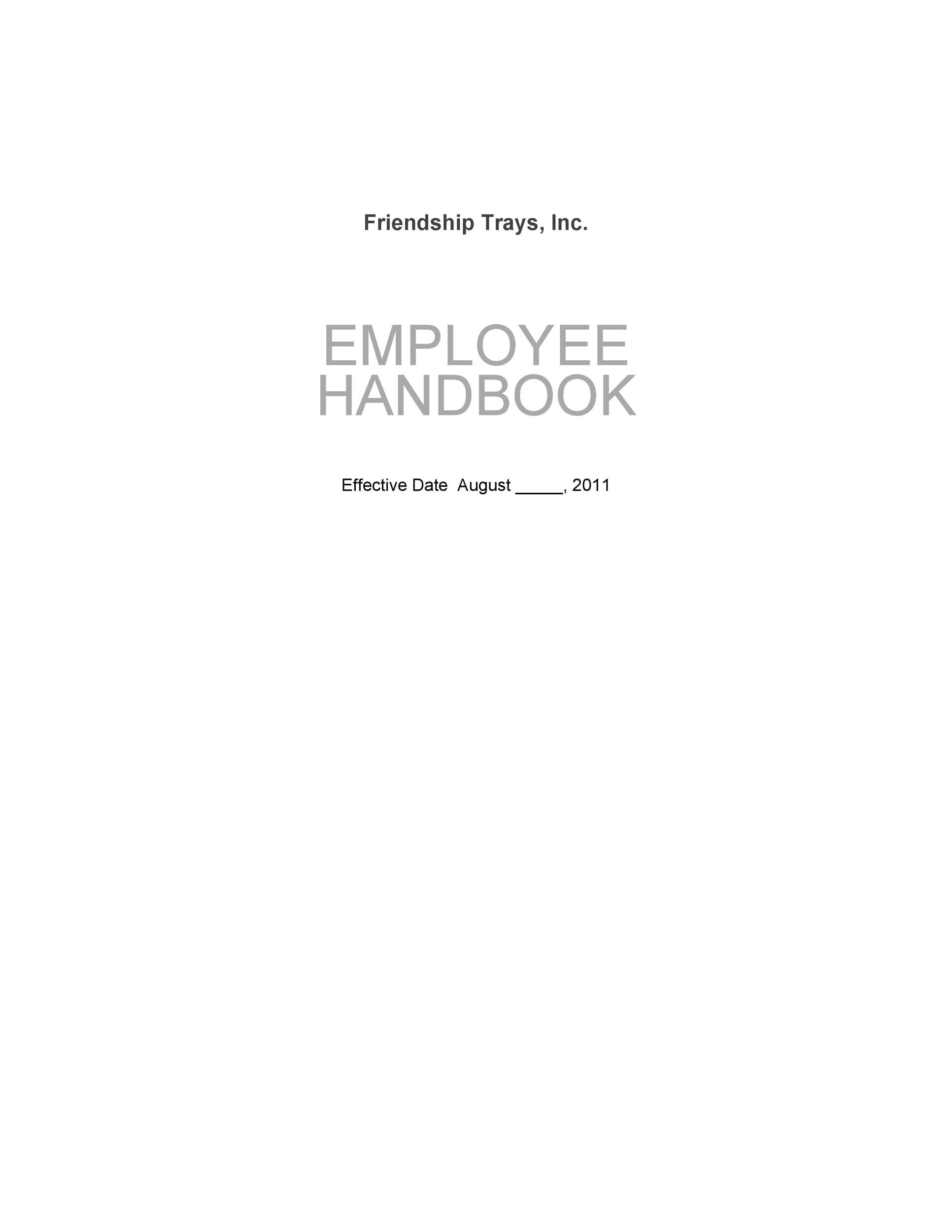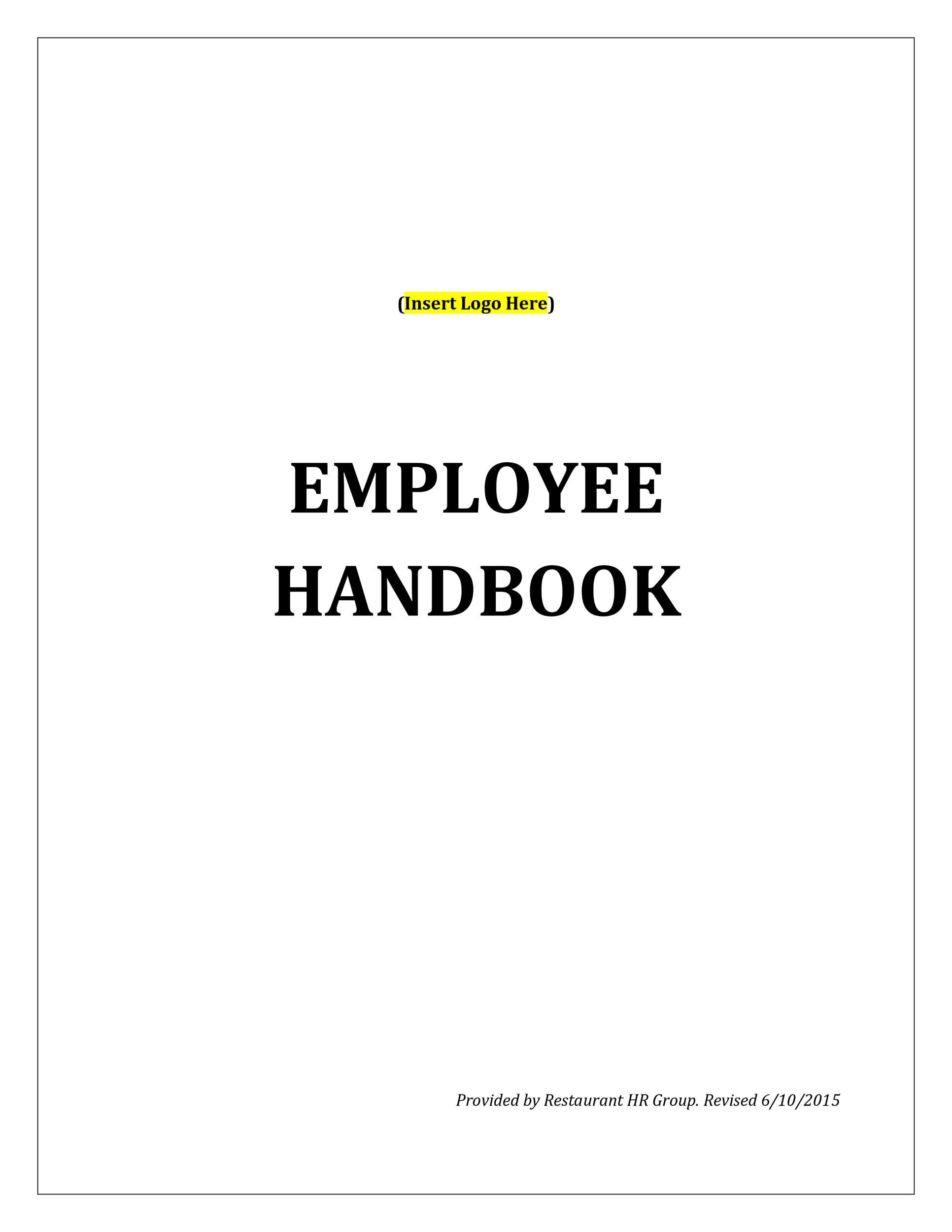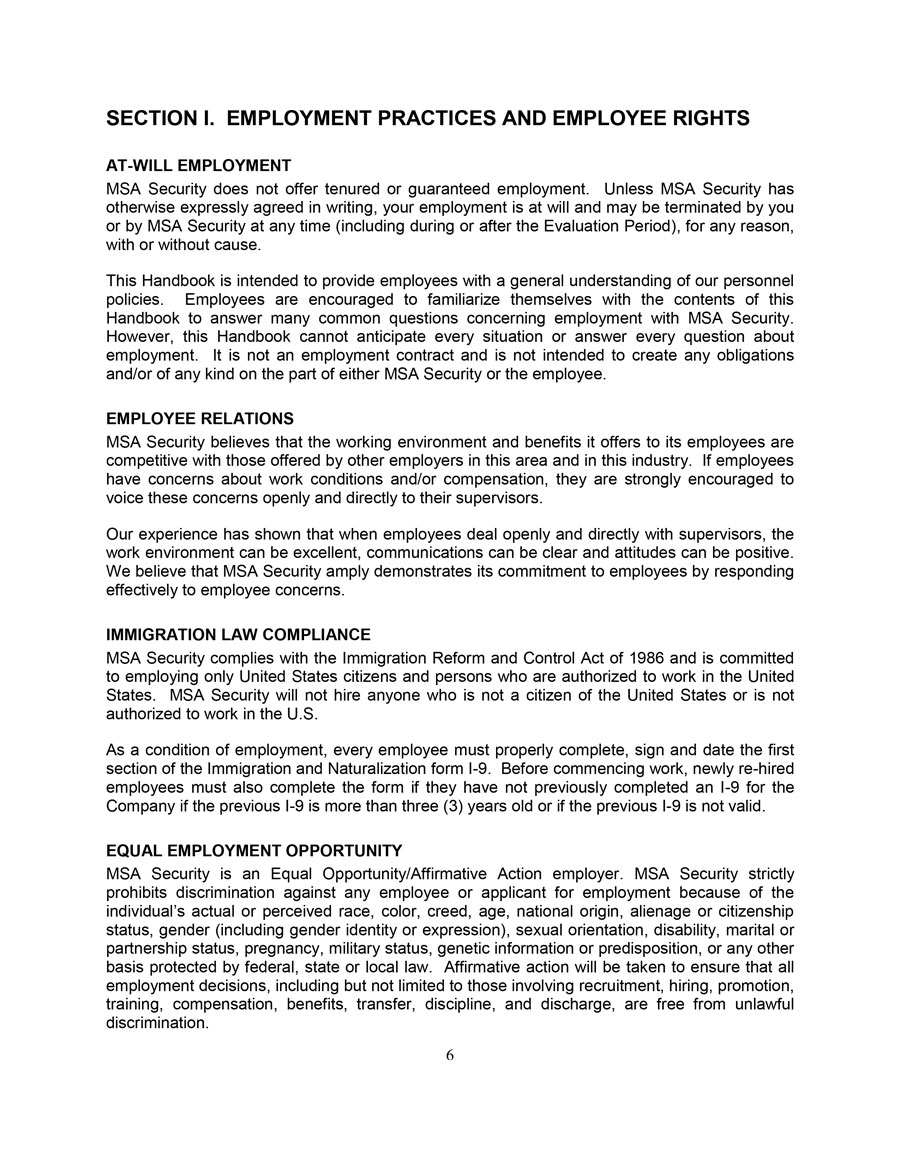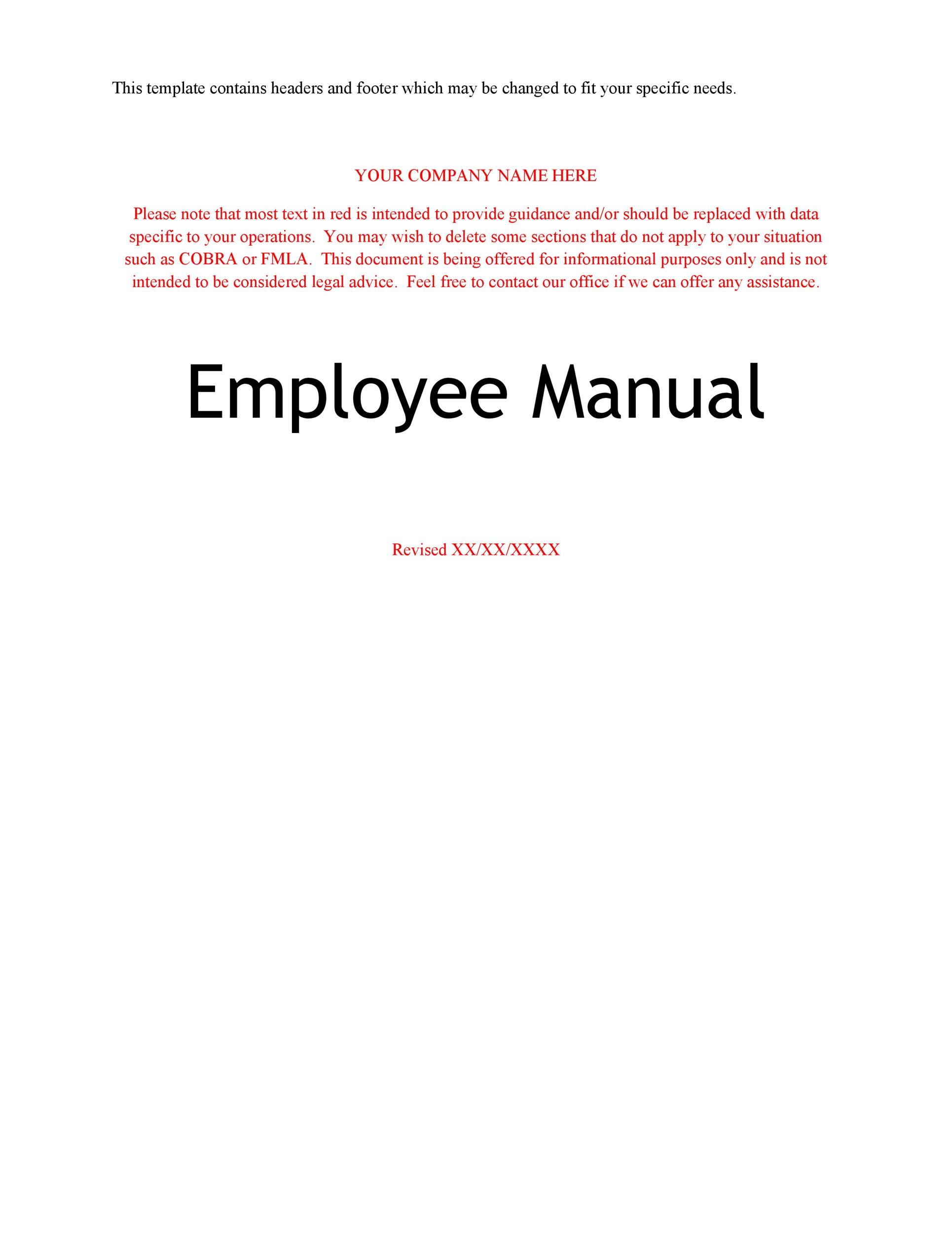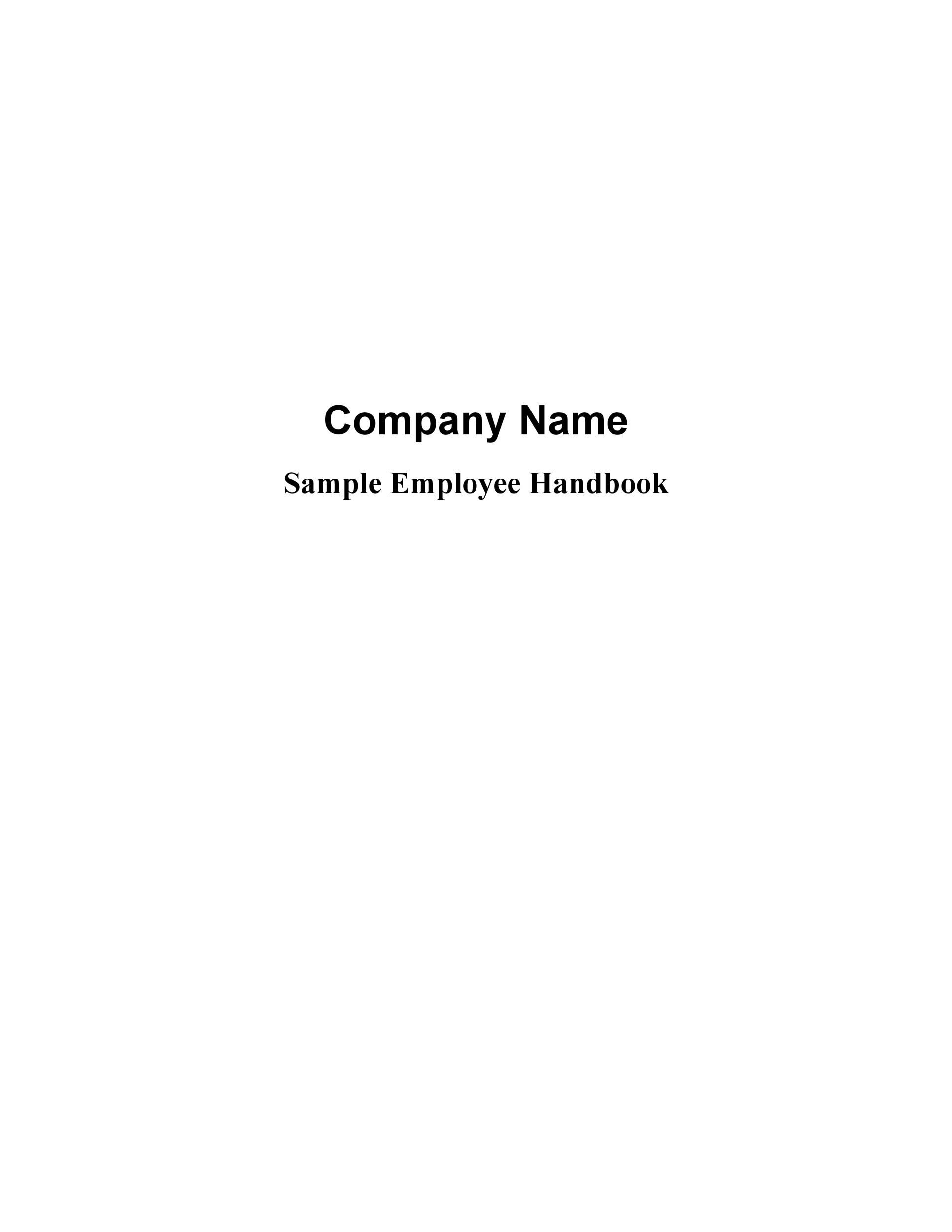An employee handbook template is very important in companies, organizations, and businesses. It contains relevant information about the company and it serves as a reference for any employees who have questions about the policies and procedures of the company. An employee manual must contain everything the employee needs to survive and thrive in the company.
Table of Contents
Employee Handbook Templates
Purpose of employee handbook
The main function of an employee handbook template is to provide clarity to the employees about what the company expects of them from the moment they start working. It’s important to clarify these expectations to the employees so that:
- You have concrete evidence to support you when dealing with insubordinate employees
If you read any employee handbook examples, you’ll see all of the significant information written in them. Therefore, the employees can’t say that they “didn’t know” that they did something wrong. In cases where you need to discipline or even fire an insubordinate employee, you can use the employee manual as proof of the wrongdoing. - Your company isn’t at risk for litigation
The employee handbook is official documentation of your company. Although it isn’t as powerful as an employment contract, it can help protect you in legal battles like when an employee sues you for wrongful termination. - You can have a dialogue with your employees
The handbook also serves as a baseline so that you can start a dialogue with your employees when issues arise. For instance, if one of your employees needs to take some time off to attend a funeral for a family member, discuss the leave procedure using the handbook as a reference.
The employee handbook also serves as the structure for your companies policies, therefore, making them clear so everybody’s on the same page. When you document your rules, guidelines, and policies properly, the likelihood of your employees following them increases.
Employee Handbook Examples
What should be included in an employee handbook?
An employee handbook template is a type of document which contains the mission, vision, expectations, and policies of the company. Employers need to create this handbook to make everything clear for their employees. Here is the basic information to include in this template:
- Employment Basics
This is the most informative part of the handbook. It’s meant to establish all of the basic information related to employment. This section provides the employees with a better idea of the terms written on their contracts and their job classifications. If the employee has basic questions, he may refer to this section.
In this section, you can also include information about the recruitment process and the basic attendance rules. Consider these ideas:
The types of employment contracts
Information about equal opportunity employment
The processes of selection and recruitment
State all of the attendance rules too, as these are very important - Workplace Policies
In this section, describe your workplace in its entirety. In other words, talk about all of the conditions that your employees work in. Include relevant policies such as health and safety, anti-harassment, and more. This encourages a pleasant and lawful environment in your office where your employees thrive.
Although this employee handbook template contains the basic information, you can customize it and add any other information which you think you need. Here is some basic information to include in this section:
Data protection and Confidentiality
Violence and Harassment
Workplace Health and Safety - Code of Conduct
For this section, provide your employees with an entire framework to base their behaviors. Create an outline of how you expect your employees to treat each other whether they’re partners, colleagues, clients or even external stakeholders. This section is all about creating a professional and safe work environment for all of your employees. The basic information to include in this section are:
Dress code
Digital Devices and Cyber Security
Dealing with Conflict of Interest
Fraternization and Employee Relationships
Employment of Family Members and Relatives
Visitors in the Workplace
Distribution and Solicitation - Development and Compensation
In this section, you explain how you compensate and reward your employees for all the hard work they do. Also, discuss the different ways on how you plan to help your employees develop and move forward in their career. Through the policies in your employee handbook, your employees see how much you value them.
When they see this information, your employees will feel motivated to keep doing their best all the time. When writing this section, include these basic points:
Payroll and Compensation Status
Performance Management
Employee Development and Training Programs - Perks and Benefits
Most of the time, employees aren’t aware of all the perks and benefits offered by their company. That’s why it’s important to include all of this information on your employee handbook for the benefit of your employees. In this section, your employees can learn more about the full extent of what they earn aside from their basic compensation. Make sure to include:
Worker’s Compensation
Work from Home Option
Daily Living Expenses
Company Car
Parking Privileges
Equipment Issued by the Company - Working Hours, Vacations, and PTO
This section is one of the most important sections in the handbook. When employees join your company, they want to know how much time they have to spend on work and how much free time they have. Again, you can include as much information as you see fit in this section. Just make sure to include the basics such as:
Working Hours and PTO or Paid Time Off
Sick Leave
Bereavement Leave
Parental Leave
Holidays
Voting and Jury Duty - Employee Termination and Resignation
Finally, it’s also important to include details about when employees leave the company. These processes are especially important if the termination or resignation comes with a disciplinary issue. In this section, discuss the details about:
Progressive Discipline
Termination
Resignation
References
Sample Employee Handbooks
How to write an employee handbook?
A well-made sample employee handbook begins with a good outline. If you don’t know where to start, you may download this sample employee handbook. Use it for your own employee handbook or use it as a reference for when you make your own template.
For you to write the employee manual, you must have a comprehensive understanding of the company, its culture, its mission, and vision. Although employee handbook examples differ, they do share a number of similar qualities:
- They’re informative which means that they contain everything from basic information to survive the daily grind to all of the policies and procedures of the company.
- They’re easy to read and interesting. So instead of using technical terminologies and jargon, it’s better to use simple wording that’s easy to understand.
- They’re designed to represent the entirety of the company accurately. Keep the tone light and fun while still providing all of the relevant information.
Employee Manuals
Changing or updating your employee handbook template
When you make a sample employee handbook for your company, make sure that you keep on changing and updating it. Your handbook must always remain updated with the local, state, and federal laws. To do this, you must also keep yourself updated, especially when it comes to changes in laws.
Apart from the laws, work policies, practices, and procedures may change as well. For instance, the management might decide to agree that employees may only send a text message to their supervisor when they’re sick. If your current handbook states that they must call, then you should modify this information.
Here are some steps to guide you when you make changes or updates to your employee handbook:
- Review your current handbook
It’s important to review your current handbook regularly to check whether you need to make any changes. The information in the handbook must always align with the norms of the company and with all the laws. If needed, do research or ask questions about the laws to ensure that your handbook remains up-to-date. - Create a draft of the new policy
When creating the draft, use clear and concise language. If you think that some employees might not understand the new information, include an example to explain it better. Also, make sure that all of the department managers understand the change in case their subordinates ask any questions. - If you’re planning to make a big change in the policies, set a meeting to discuss it first
In cases where you need to make a huge modification such as a change in leave or compensation policies, set a meeting to discuss it first. In the meeting, explain the new policy, answer any questions about it, then if everyone agrees, create the draft regarding the new information.
If you’re planning to make a change in one of the more controversial policies, set a meeting to explain everything about it to your employees before you finalize and enforce the policy. Then ask the employees to sign a form stating that they received the information and understand the changes. - Even if it’s a small change, announce it
For smaller changes which you’ve already implemented unofficially, just write them down and include them in your handbook. Then announce the formal change through email and include a link or a PDF file of the updated handbook.



